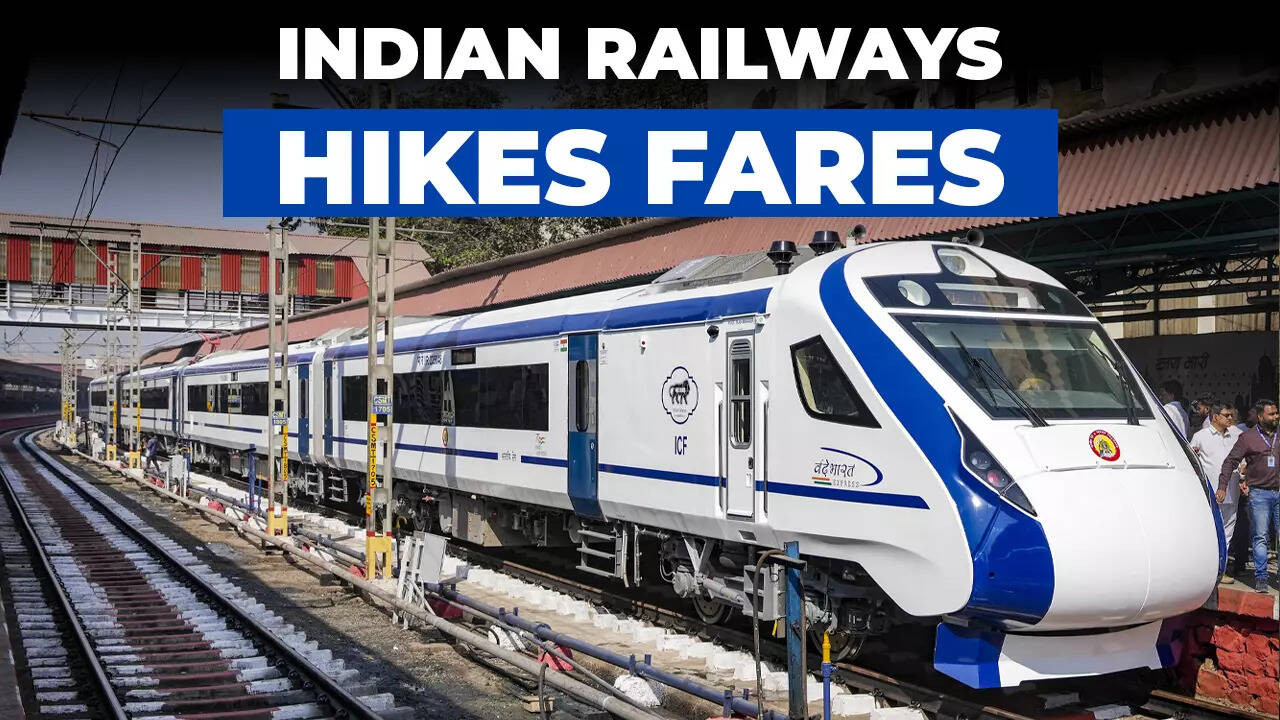Indian Railways has announced a slight increase in passenger train fares, set to take effect on July 1, 2025. The Ministry of Railways states that this adjustment aims to enhance service sustainability and streamline fare calculations. While suburban journey fares remain unchanged, there are marginal hikes across various classes, including both non-AC and AC categories in Mail/Express trains.
A Slight Shift on the Tracks: What the Revised Indian Railways Fares Mean for You
The familiar rhythm of train travel in India is about to experience a subtle, yet noticeable, change. Starting July 1, 2025, Indian Railways will be implementing a minor adjustment to its fare structure, impacting both AC and non-AC classes. While the hike is being described as “marginal,” it’s worth unpacking exactly what this means for the everyday passenger and how it might influence travel plans.
The headline? Expect to pay a little extra for your journey. The specifics, however, require a closer look. This isn’t a blanket increase across the board. Instead, the Railways are implementing a revised service charge, factored into the total ticket cost. This change encompasses various classes, from the budget-friendly sleeper class to the more luxurious AC First Class.
So, how much more are we talking? While the exact figures will depend on the distance traveled and the class of travel, initial reports suggest that the increase will be relatively small. For instance, a non-AC sleeper class ticket might see an increase of ₹10-₹25, while an AC First Class ticket could see a rise of ₹25-₹50. These figures are indicative and can vary, so checking the updated fare structure directly on the IRCTC website or app before booking is paramount.
The reasoning behind this minor fare adjustment is multi-pronged. One key factor is the rising cost of maintaining and upgrading the vast railway network. Think of it as an investment in the future – these incremental increases will contribute to improved infrastructure, enhanced safety measures, and a generally better travel experience for all.
<img src="image_url_here.jpg" alt="An Indian Railways train approaches a station, illustrating the slight Indian Railways fare hike.” width=”600″ height=”400″>
Another crucial point to consider is the Railways’ ongoing efforts to modernize its services. This includes things like the introduction of Vande Bharat Express trains, the electrification of routes, and the overall improvement of passenger amenities at stations. All of this requires significant investment, and the revised fares will help offset some of these costs.
The impact of this fare revision will likely be felt most by frequent train travelers, particularly those who rely on the more affordable non-AC classes. While the individual increases may seem small, they can add up over time, especially for those making regular trips. However, it’s important to remember that even with these adjustments, Indian Railways remains one of the most affordable modes of long-distance travel in the country. For travelers looking to explore the country on a budget, planning and booking in advance can help mitigate the impact of the price rise.
The news, of course, raises questions about the balance between affordability and the need for sustainable development within the railway sector. How can the Railways continue to provide affordable transportation while simultaneously investing in upgrades and modernization? The answer likely lies in a combination of strategic fare adjustments, efficient resource management, and continued government support.
One thing’s for sure: the railways continue to be a vital part of the Indian transportation ecosystem. You might find our article about luxury train travel in India interesting too! The minor fare revisions are a small piece of a much larger puzzle – one that involves ensuring the long-term viability and continued improvement of this crucial public service.
Ultimately, the revised Indian Railways fare hike, while noticeable, is unlikely to deter most people from choosing train travel. The convenience, affordability (even with the increase), and extensive network coverage make it a compelling option for millions of Indians. The key takeaway is to stay informed about the latest fare structures and plan your journeys accordingly. By doing so, you can continue to enjoy the unique charm and accessibility of train travel in India, even as the tracks undergo subtle shifts.







